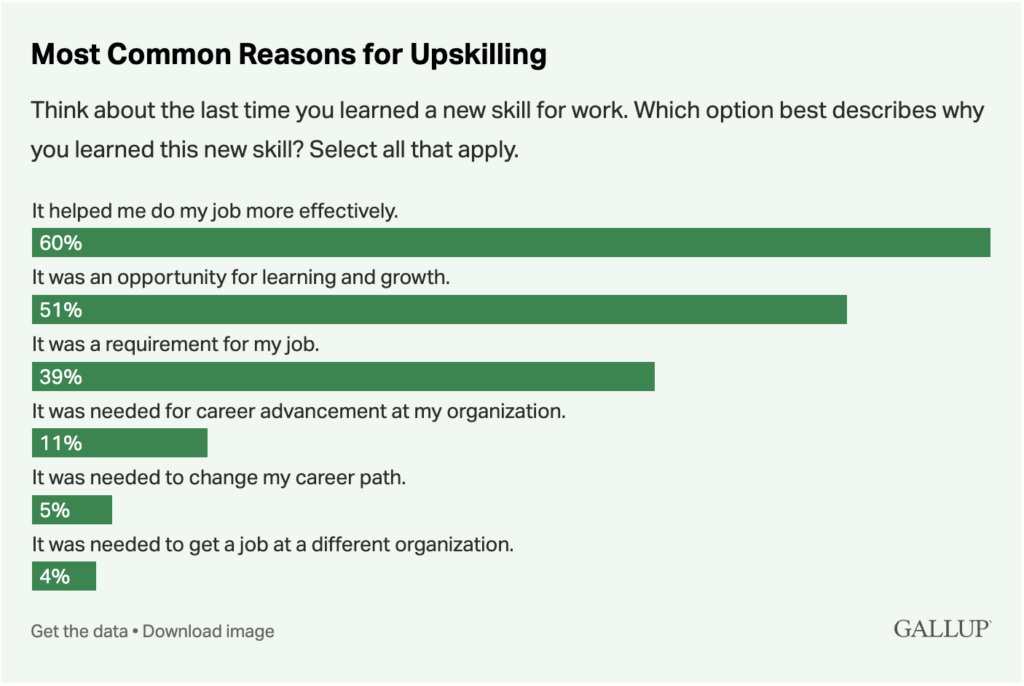A recent Gallup study presented a stark reality: 72% of Chief Human Resources Officers anticipate AI replacing roles within their organizations in the next three years. While this might sound alarming, there’s a silver lining – the majority of employees report that learning new skills not only helps them in their current roles but presents opportunities for growth. The message is clear: we need to become more efficient learners, particularly when it comes to mastering new software tools.

Through months of hands-on experience and experimentation, I’ve developed a framework that combines six powerful learning principles with modern AI capabilities:
- Mental Models: Our understanding of how systems work and interact
- Meta Learning Strategies: The process of learning how to learn effectively
- Experimentation: Hands-on discovery through trial and error
- Deliberate Practice: Focused, systematic skill development
- Immediate Feedback: Learning through rapid response to our actions
- Socially-situated Learning: Learning that happens naturally when people work together.
Let’s review how these principles come together in a three-step framework, using my experience with SmartSuite, a versatile workplace management platform, as an example.
Step 1: Define Your Learning Intent
The foundation of rapid learning lies in meta learning – the process of understanding how we learn. Before diving into any new software, explicitly define what you want to achieve. This clarity helps focus your efforts and provides a measuring stick for progress.
When I approached SmartSuite, my goals were specific: as a newcomer to web database software, I wanted to understand its practical applications and experience firsthand the evolving “workplace management and collaboration software” trend. This clear intention helped me filter through the platform’s extensive features to focus on what mattered most.
Step 2: Leverage AI to Decode the Mental Model
I don’t like to use the term “game-changer” but for me, this step is one. Every software application is built on a mental model – a framework for how it operates. Understanding this model is crucial because software is inherently abstract, and its capabilities aren’t always apparent at first glance.
Using AI, I uncovered SmartSuite’s core structure: Solutions (comprehensive business processes) contain Tables (specific functional areas), which Records (individual items) made up of Fields (discrete data points). This hierarchical understanding revealed the platform’s true flexibility and helped me grasp how I could adapt it to my needs.
Try this prompt with your preferred AI
Search only within the official site (site:[vendor's official URL]) and support documentation (site:[vendor's support documentation URL]) to explain the mental model and hierarchy behind [Software Name]. Provide direct citations or links.Step 3: Choose Your Learning Path
With a solid understanding of the software’s mental model, select the learning approach that matches your style:
The Experimental Path: Jump in and learn through trial and error. I spent three months exploring SmartSuite’s free version, discovering its capabilities through hands-on experimentation. This approach provides immediate feedback – features either work or they don’t.
The Structured Approach: Following the principle of deliberate practice, break down complex features into manageable components. While SmartSuite offers excellent templates, I learned most by using them as inspiration to create simpler, customized versions that matched my specific needs.
The Social Route: Never underestimate the power of learning from others, or socially-situated learning. I regularly attend SmartSuite’s drop-in Q&A sessions, gaining insights from other users’ questions and challenges. These sessions offer use cases and solutions I wouldn’t have discovered on my own.

Building Learning Resilience
As organizations continue to adopt new technologies, our success depends less on what we know today and more on how effectively we can learn tomorrow. This framework, combining proven learning principles with AI-powered insights, offers quick learning techniques to tackle any new tool or platform. By mastering the process of learning itself—from setting clear intentions to choosing personalized learning paths—you’re developing the adaptability needed to thrive in an evolving workplace. The specific tools will change, but your ability to learn and adapt will remain your greatest asset.
